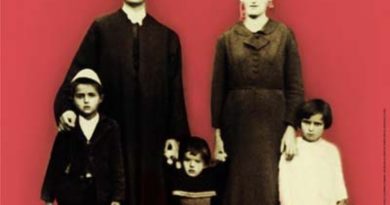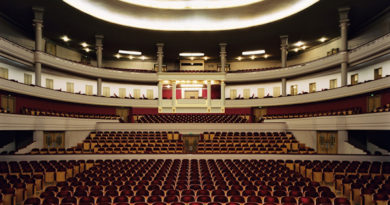Bolivian adventure: from La Paz to the Death Road
You might have heard about the Death Road. Well, despite the creepy name it is one of the most beautiful roads you can ride on.
To reach this epic road, you need to pass through La Paz, the highest capital in the world and most populated urban area in Bolivia. This city will not leave you indifferent thanks to its high-rise at 3600 metres above sea level. It is impossible to not notice the brick houses spread throughout the hills and to feel engulfed by its fast pace and traffic noise. Moreover, there is a sort of mysticism that only few of us will perceive. Clearly for me it was one of the most marking cities I’ve ever been.
Visiting La Paz for a few days teaches you a lot about the Bolivian culture through its rites and legends.
A few meters from the Sucre Plaza you can find one of the most corrupted prisons of Bolivia: San Pedro prison. San Pedro is definitely not a traditional penitentiary. Here, inmates must pay to have their own cells and all of them have jobs in the prison. Some inmates even live in it with their family. There are even restaurants and shops ruled by prisoners. In San Pedro, guards rarely intervene. You can scent the drug smuggling activities. Some locals tell that this prison is a cocaine laboratory and that they have seen diapers filled up with drugs flying into the plaza, which are immediately caught by drug smugglers. The most surprising fact is that travelers can visit the prison. However, these tours are not recommended for safety reasons. You don’t want to get into trouble in there.
La Paz is also known for its endless street markets. Locals come to Rodriguez Market to do their daily groceries. You can find Cholitas (indigenous Ayamara and Quechua women) everywhere who everyday tote their products and come here to sell their merchandise. You can find all kind of vegetables, especially potatoes (over 200 variety of potatoes can be found in Bolivia), meat, fish, and handicrafts, all exposed in open air.
After 3 miles of ambulant market you have access into yet another market, unique and bizarre: the witches’ market. Strange name for a market you’re wondering.
Here you can find a wide variety of herbs, medicines, and good luck charms such as colorful candies in all sort of shapes each with its particular meaning. According to Ayamara culture those products bring health, bonanza and protection for whom seeks for it.
Pay attention while visiting and avoid taking pictures without asking permission. Yatiris women (Bolivian fortune tellers considered spiritual beings) can be quite powerful so don’t underestimate their presence. Walking through the market your attention will be driven to the exposed Lama fetuses hanging everywhere. Bolivian people are quite superstitious and so before building a house, as a contribution they offer a gift to Pachamama (Mother Earth). They bury a Lama fetus in the land where the house will be built, as an act of requesting blessing and permission to Mother Earth to build on this field.
Surely while visiting La Paz you will come across protests. Here, locals do protest a lot, some even purposely travel to the city to express their discontentment about government initiatives. Road blocks are common, so don’t be surprised if you are trapped in La Paz. It happens quite often and there is not much you can do about it.
Experiencing the Death Road
Knowing in advance that the road to the Titicaca lac was blocked due to protest, we had to stay in La Paz one more day and we decided to go on an adventure by biking the Death Road.
Waking up early in the morning the adrenaline started to kick in our bodies while we were heading to the tours’ meeting point. After a briefing about safety issues we entered in a two-hour bus ride until reaching the starting point of the journey. Here bikes were set up and tested before starting to go down a 22-km long hill of a paved road. This gave us time to get used to the bikes and to gain more confidence while enjoying the incredible view.

We jumped in to the bus again to preserve our stamina and prepared ourselves to the forthcoming downhill: La Carretera de la Muerte.
This gravel road connects the Andes mountains to the Amazon forest and it is considered the most dangerous road in the world due to its side cliff off 600 metres high, and its small width where only a single vehicle can pass. Thousands of people have died on this road, being the only road that connected the region of Yungas to La Paz. Unlike the rest of Bolivia, here vehicles are required to drive on the left side, for drivers to be able to look closer where the edge of the road is and better see upcoming cars over tight corners. In 2006 a new road was built to ensure more safety and to enable people from Yungas to reach La Paz without putting their lives in danger.
Today La Carretera de la Muerte is known as the most famous mountain bike trail and so adrenaline adventurers come here every day to downhill this unbreathing road. Ascending to 4650 meters at La Cumbre Pass in a descent until the town of Coroico situated at 1200 meters above sea level. We started at the top, where the temperature is cold and the early morning fog reduces the visibility of the gravel road. The adrenaline rushes again, hands begin to sweat, blood pressure goes up and increases our heartbeats while we start the vertiginous descent, that sometimes can be slippery with waterfalls and the river plunging down onto the road.
Beware, cars do still use this road, so in tight corners it is better to use the left side of the road nearest to the cliff to avoid hitting a car.
At the middle of the downhill, once we started to get used to the edge side road cliff, the temperature got higher. It was time to take off our jackets and put on the insect repellent to avoid mosquito bites. The fog started to disappear and leaving a clear view of the astonishing amazon forest and surrounded environment. When we started to gain more confidence and begun to distract ourselves with the sight. The guides had warned us to always look attentively to the gravel road because an unavoided rock could make you fall. Luckily, no one got seriously injured and the group made it to the end. Finishing the Death Road is indescribably rewarding. The fact of surpassing our fears and having survived through it without getting hurt is a sentiment of accomplishment. In Coroico town, food and swimming pool was waiting for us and it was time to relax and be grateful that we survived throughout this journey.
For the ones that are more afraid and are not used to riding bikes, some parts of the trail can be hard but you have always the option to get back into the van if you feel uncomfortable. Sincerely, we felt safer to continue in our two wheels rather than in four.
Good to Know:
Choose well the tour operator you’re going with, and make sure to check the equipment at the local store instead of booking it online. The conditions of the bikes are really important, if you want to end this journey in one piece. If you’re travelling in Bolivia don’t miss this ride. For sure you will feel alive and grateful to have done it.



